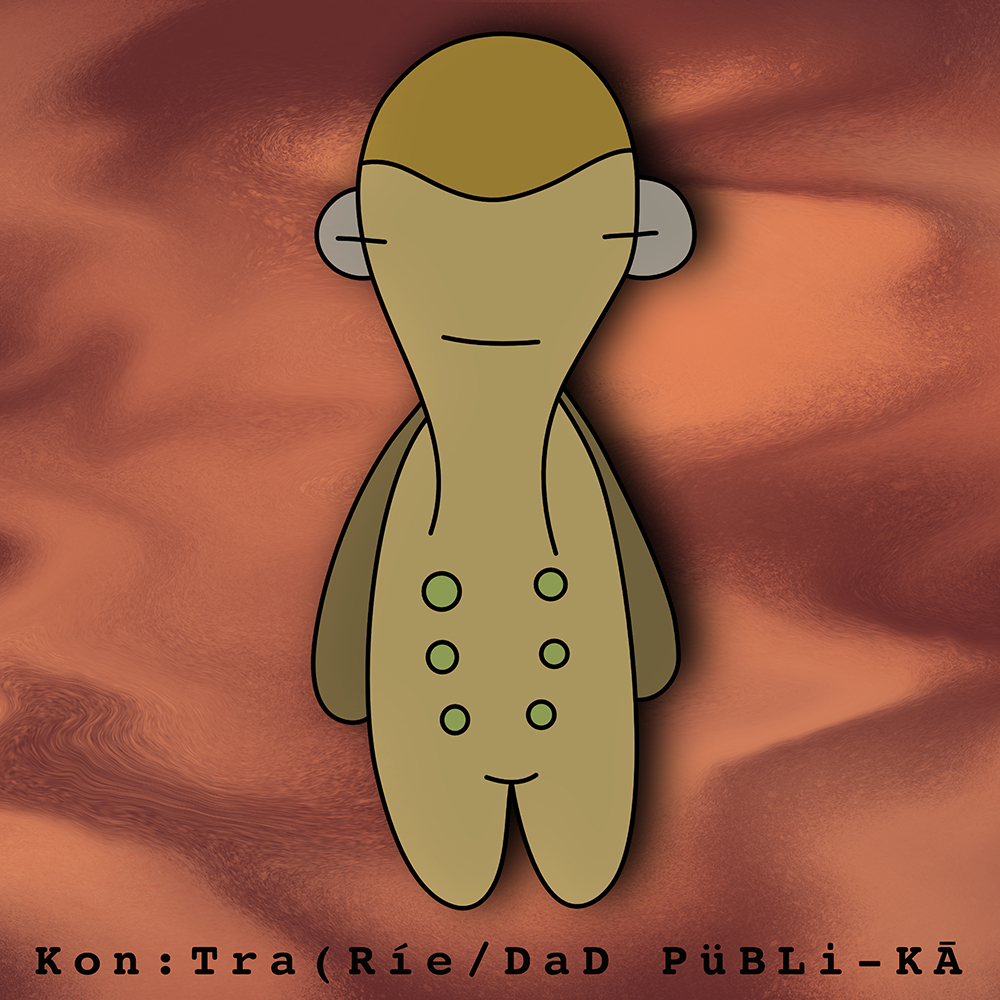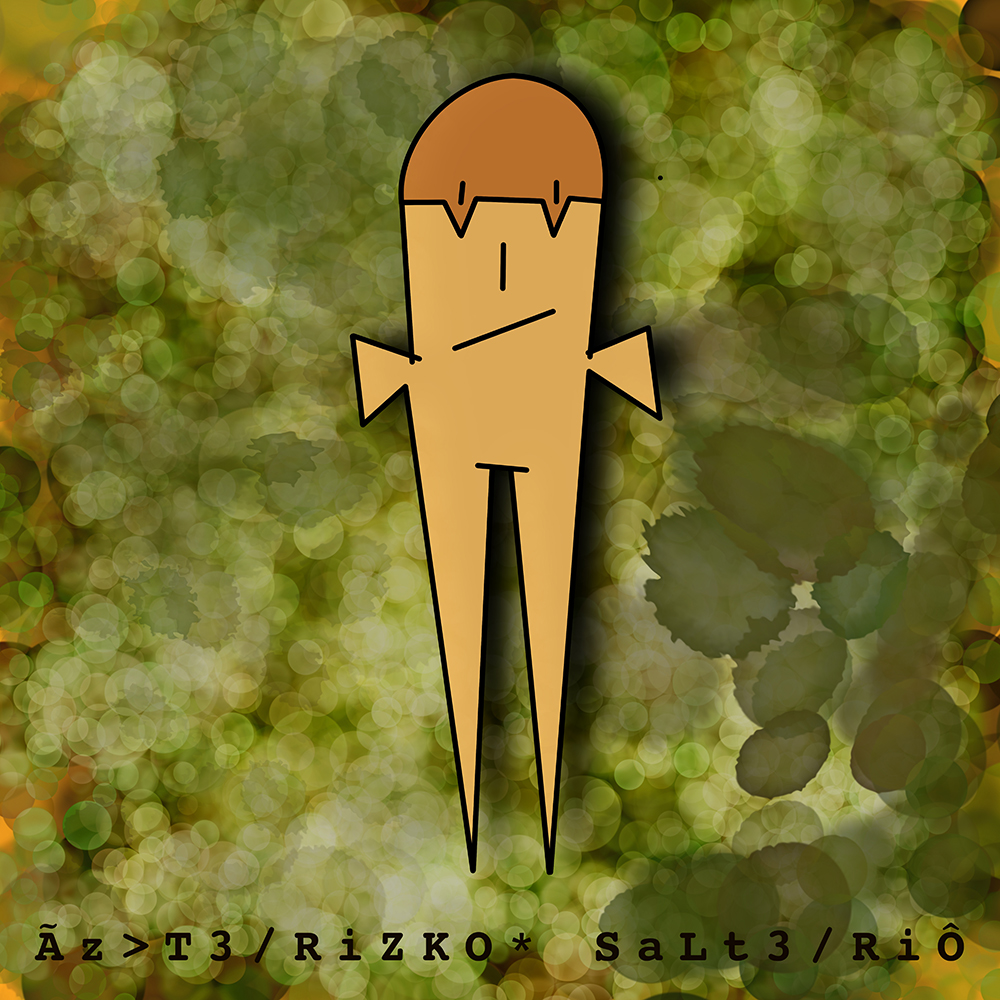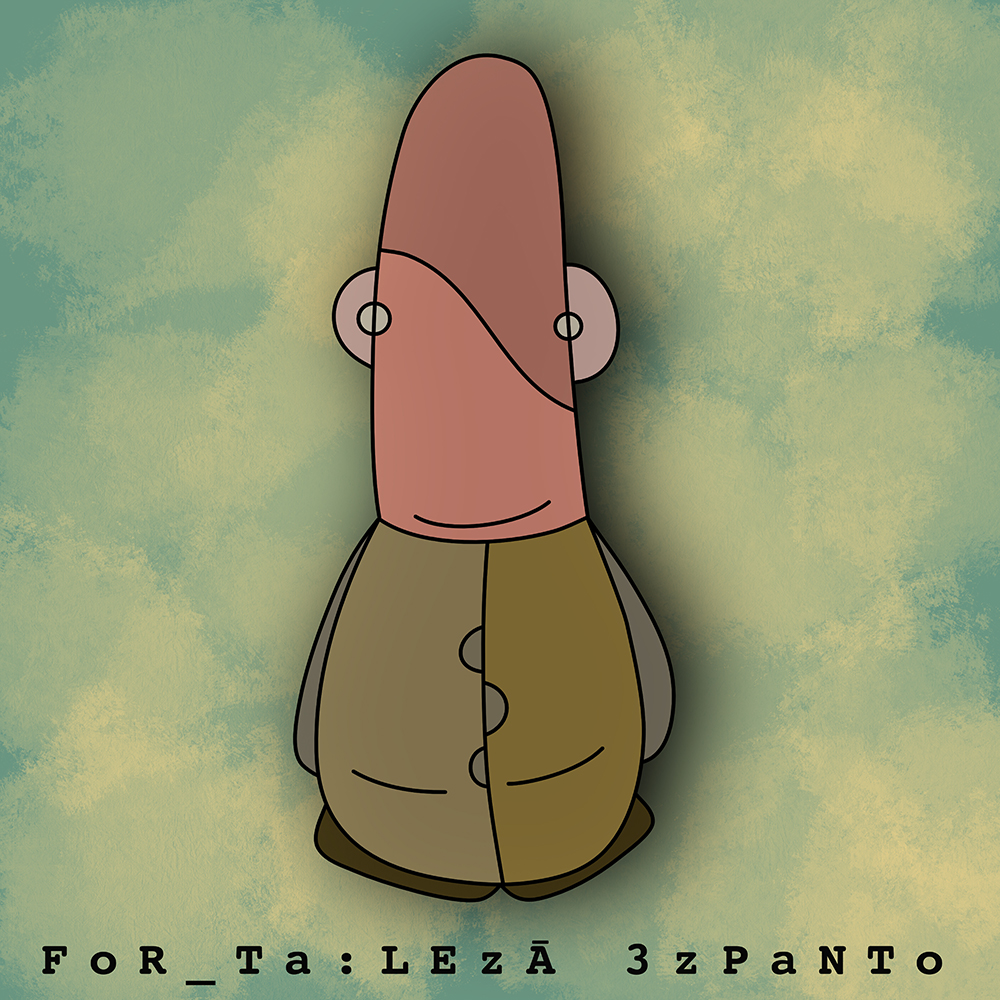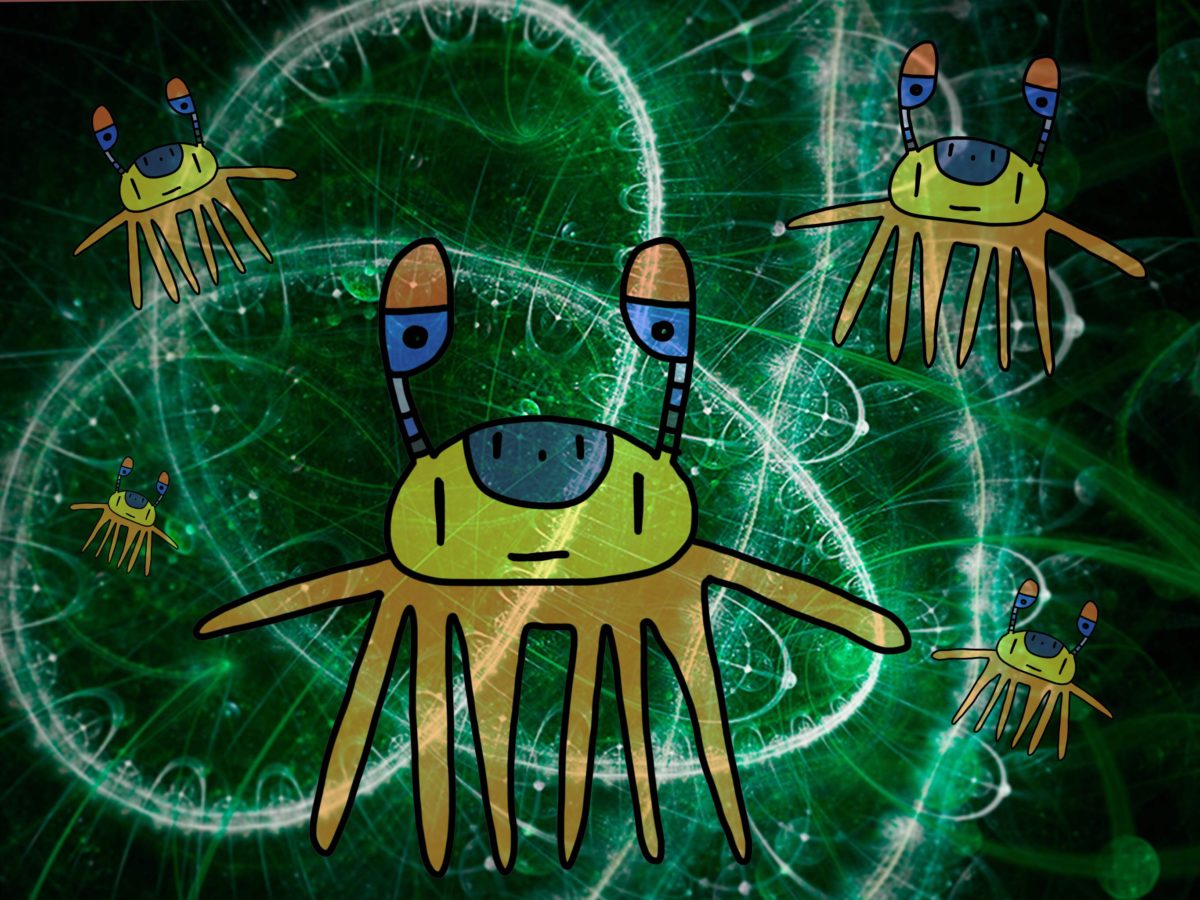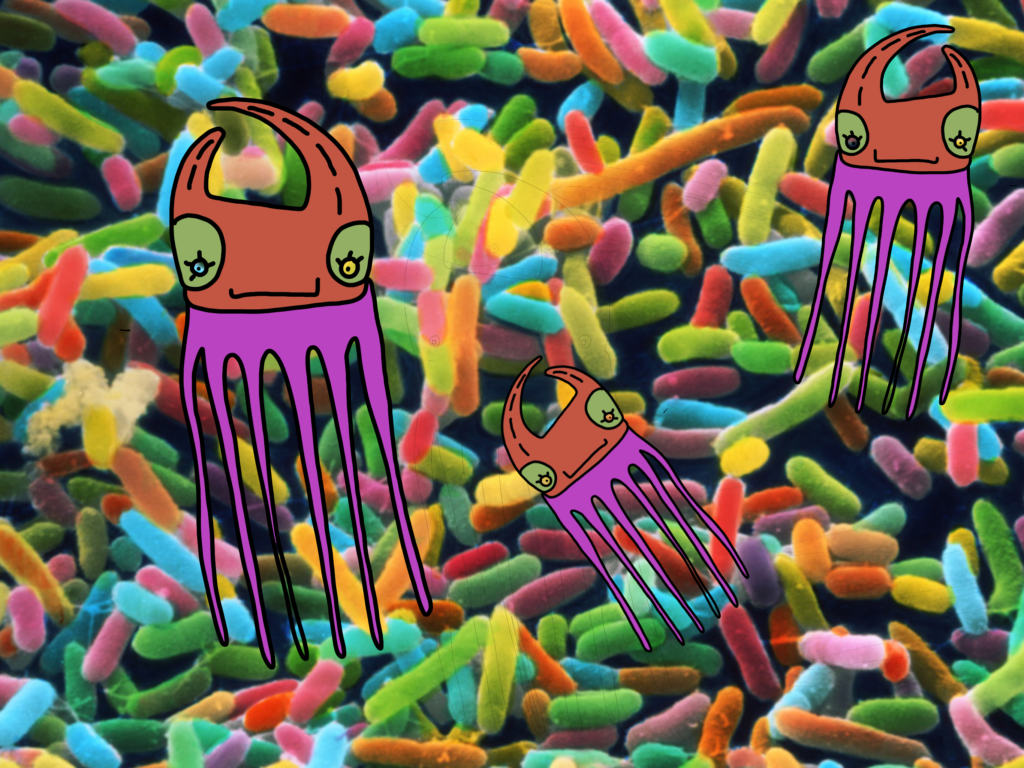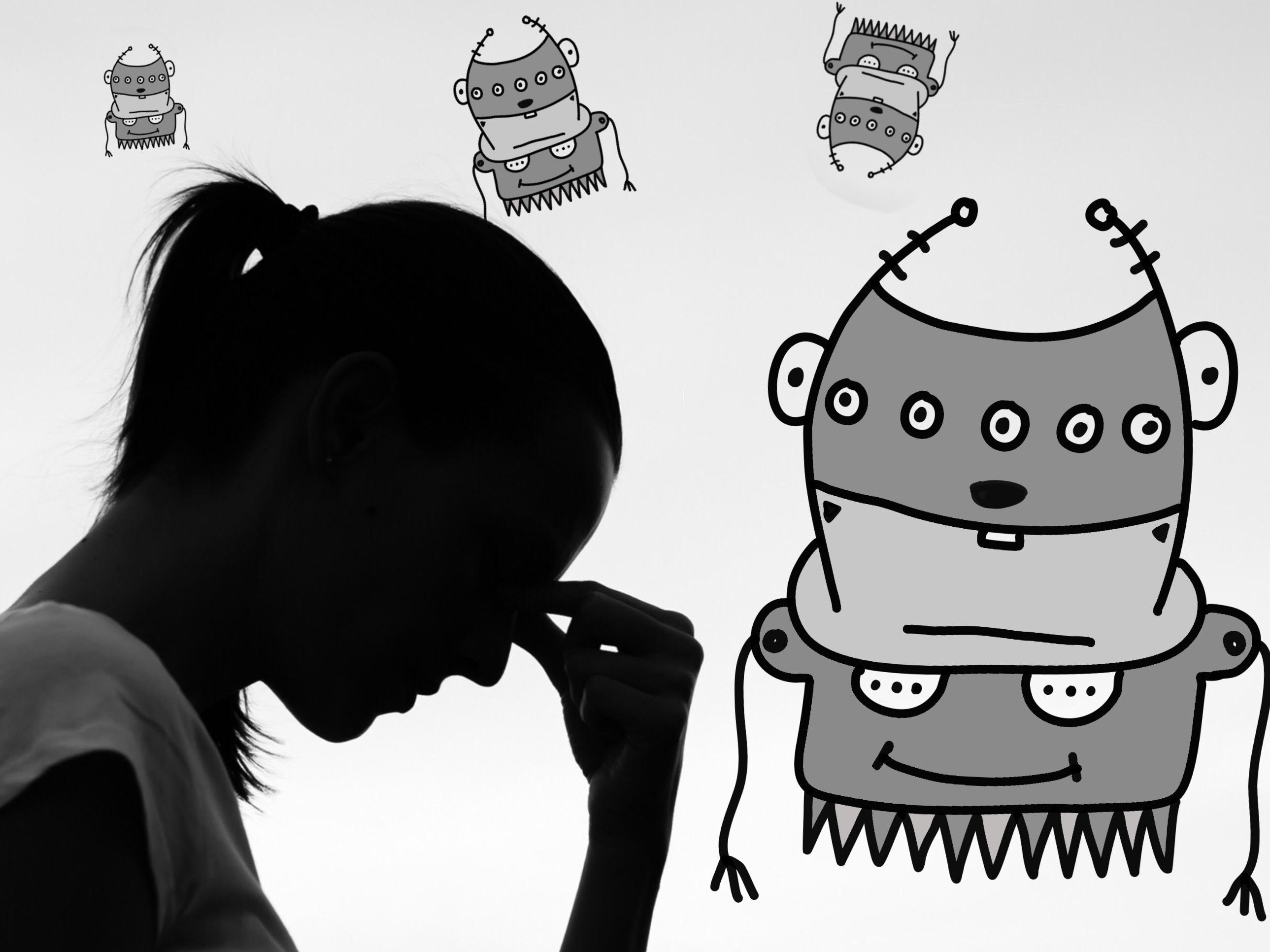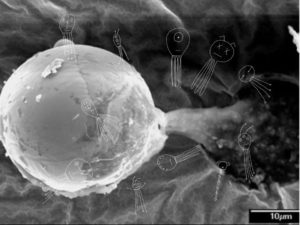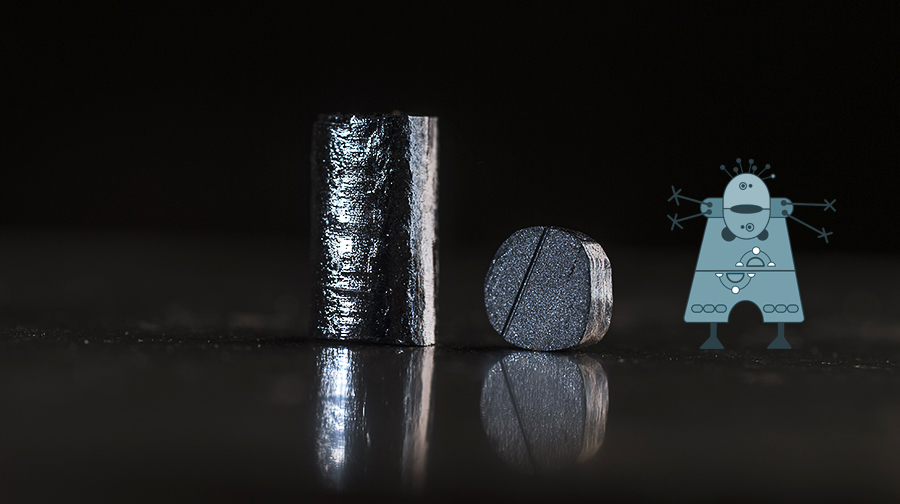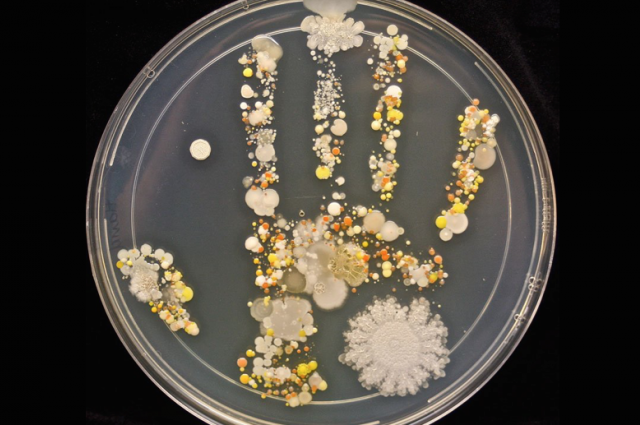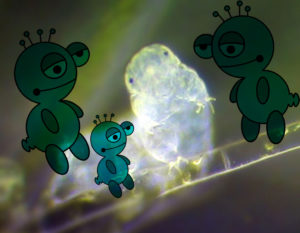
Autism and the Microbiome: Immunization With Bacteria?
Microbiome7By Teresa Conrick
http://www.ageofautism.com/2016/06/autism-and-the-microbiome-immunization-with-bacteria.html
As more and more is unraveled about the MICROBIOME in health and disease, causes and of course treatments are going to be discussed. The big questions will hopefully concern prevention of diseases as well. I recently came upon an article that made me wonder what direction Microbiome research could take:
Immunization with bacteria promotes stress resilience, coping behaviors in mice, CU-Boulder study finds
Injections of the soil bacterium Mycobacterium vaccae (M. vaccae NCTC 11659) promote stress resilience and improve coping behaviors in mice, according to a new study led by the University of Colorado Boulder.
The researchers also found that M. vaccae prevented stress-induced colitis, a typical symptom of inflammatory bowel disease (IBD), suggesting that immunization with the bacteria may have a wide-ranging suite of health benefits.
The findings appear today in the journal Proceedings of the National Academy of Sciences
“The immunized mice responded with a more proactive behavioral coping response to stress, a strategy that has been associated with stress resilience in animals and humans,” said Christopher Lowry, an associate professor in the Department of Integrative Physiology at CU-Boulder and the senior author of the new research….
The immunized mice continued to show decreased levels of submissive behaviors one to two weeks after treatment. M. vaccae treatment reduced stress-induced colitis…
…The research underscores the importance of an organism’s microbiome in preventing and coping with inflammation-related diseases and psychiatric conditions…
…“An injection of M. vaccae is not designed to target a particular antigen the way a vaccine would, but instead activates the individual’s immunoregulatory responses to protect from inappropriate inflammation…
Well that’s interesting and could also make one wonder, could this be something for AUTISM? Maybe that’s what the authors are inferring here in the full study about “PREVENTION” .full:
Although not specifically addressed here, immunoregulatory approaches may also prove useful in prevention of neurodevelopmental and other somatic and neuropsychiatric disorders in which elevated inflammation contributes to disease vulnerability (84).
INAPPROPRIATE INFLAMMATION. That sure could be AUTISM as most research shows INFLAMMATION in the brain. The MICROBIOME has been shown to be very connected to the MICROGLIA in the BRAIN.
But the idea of immunization as a treatment for Autism may be hard to fathom as many parents witnessed their children regress into Autism after vaccination. Are VACCINATION and IMMUNIZATION much different? In this case though, it does appear to be almost an immunization antidote in a way, as these good bacteria seem to be a Superman, able to turn back time to when the Microbiome was unaltered, or maybe undamaged is a better word? For many it may be the word — IMMUNIZATION — that will just be a turn-off.
The bacteria mentioned here, Mycobacterium vacca, has other ways it can enter the body – This study is from 2010 and is similar to the study from above —:
Mycobacterium vaccae is a natural soil bacterium which people likely ingest or breathe in when they spend time in nature,
…We found that mice that were fed live M. vaccae navigated the maze twice as fast and with less demonstrated anxiety behaviors as control mice…..
But, in that same study — immunization of M. vaccae enabled some NEURONS to grow — Previous research studies on M. vaccae showed that heat-killed bacteria injected into mice stimulated growth of some neurons in the brain that resulted in increased levels of serotonin and decreased anxiety. Again, a very similar study.
So did the bacteria stimulate the growth of neurons? It sounds, according to the study, that it is possible and almost like a way to help the MICROBIOME of many but maybe especially those who show symptoms related to:
INFLAMMATION
stress-induced colitis , a typical symptom of inflammatory bowel disease (IBD)
preventing and coping with inflammation-related diseases and psychiatric conditions
modulating the immune system
For many, this describes both the medical and subsequent behavioral signs of Autism.
Ironically, as I was typing this out, a kind reader from here at Age of Autism, sent me a few emails that seemed related. We are blessed to have a steady “family” of fans and supporters who follow us:
Hi Teresa,
I have a 13 year old with Autism and PANDAS. A few months ago my daughter’s biomed doctor put her on Ortho Molecular Products “Ortho Biotic 100 Million CFU.” We are seeing changes in her and I noticed the other day on the side of the box it says “broad spectrum proven strains restore the natural diversity of the microbiome.”
… this new probiotic seems to be doing something. She went to the zoo yesterday with her school and so I asked her what she saw there. Usually when you ask her a question her answer is “good,” but she looked up at me and said “elephant” with no delay and good eye contact.
I thought maybe it would help your daughter.
….Oh also, my daughter is a red head with blue eyes.
Well, I thanked her very much for her support and thoughtfulness (Thank you again, Sandy! ), and for any that don’t know, my daughter, Megan, is red-headed with blue eyes. Knowing other are with us on our journey in helping our ill and affected children is a comfort to say the least.
Her mention of Ortho Molecular’s “Ortho Biotic 100 Million CFU” got me reading up on this product with with much interest, and with the above studies still in my brain:
Ortho Biotic 100 is a high-dose probiotic delivering 100 billion active cultures for cases of gastrointestinal (GI) and immune distress. Going beyond the threshold of traditional probiotic support, high-dose probiotics influence GI health and immunity in ways lower-dose probiotics cannot. Shown to activate over 1,700 genes involved in immune and inflammatory signaling, high-dose probiotics improve immune function, strengthen the gut-immune barrier, and promote inflammatory balance.
Enhances Immune System Function
Strengthens the Gut-Immune Barrier
Promotes Inflammatory Balance
Supports Digestion and Micronutrient Absorption
Maintains Gastrointestinal Health
Well, it looks very promising. I am not endorsing it or the above immunization method but just want to show that treatments to change the Microbiome into a healthier state are increasing.
As you can ascertain, there are related studies and treatments on the Microbiome, and Autism is hopefully going to benefit immensely by them. Checking them out is important and the mode of delivery seems an appropriate research area. We might also walk away from this seeing that immunizations can alter the Microbiome. In this situation, we see benefit but could it also be true that immunization could do the opposite, as in well-baby visits?
Teresa Conrick is Contributing Editor to Age of Autism.
Posted by Age of Autism on June 07, 2016 at 06:00 AM in Teresa Conrick | Permalink | Comments (13)
Comments
Feed You can follow this conversation by subscribing to the comment feed for this post.
Jeannette Bishop
In case the study discussed below has not already been referenced (apologies if I missed it) and in the event it might be relevant:
https://www.sciencedaily.com/releases/2016/05/160519130105.htm
“Antibiotics that kill gut bacteria also stop growth of new brain cells”
Summary:
Antibiotics strong enough to kill off gut bacteria can also stop the growth of new brain cells in the hippocampus, a section of the brain associated with memory, reports a new study in mice. Researchers also uncovered a clue to why — a type of white blood cell seems to act as a communicator between the brain, the immune system, and the gut.
Posted by: Jeannette Bishop | June 13, 2016 at 11:29 PM
Benedetta
The video is called “Immune system dysregulation”
Posted by: Benedetta | June 13, 2016 at 10:53 PM
Benedetta
Dr. Susan Humphries has a video on research she put together on dead parts of microbes vs live microbes/viruses.
Apparently dead part of microbes causes the immune system more problems, unable to fight off other diseases, and higher mortality rate.
https://www.facebook.com/VaxXed/?fref=nf
I don’t know if the above link I gave will get any one that is interested to her site or not.
Live turns on Th 1 and dead turns the Th2 immune system.
Posted by: Benedetta | June 13, 2016 at 10:51 PM
Betty Bona
I do think they are on to something here, but I shudder at how the implementation of the new knowledge may actually cause even more damage. I don’t want another “immunization”! How about supplementing our topsoil with this soil bacteria and refraining from pesticides that kill this bacteria so that we get the bacteria we need in the way we were intended to get it – through our food. This also gives me even more hope for the product, Restore. It doesn’t have the soil bacteria in it, but it has the byproducts of ancient soil bacteria. The byproducts act as communication messengers. What were all these ancient bacteria, and can we replenish our soil with them? This research is exciting, but I don’t like the use of just one bacteria, and I don’t like the introduction through such a non-natural route. The way money controls everything in the healthcare field, I predict a vaccination for all with this bacteria, and I predict more harm will be done than good.
Posted by: Betty Bona | June 13, 2016 at 11:54 AM
Benedetta
All vaccines is basically dead bacteria or parts or even just the toxoid the bacteria produce; unless it is some live weakened virus.
That is how the whole vaccine theory is suppose to work isn’t it?
The immune system is then presented with these antigens and gets ready for the next time if the real bacteria, or virus comes along. Maybe it don’t work that way at all but teaches tolerance?
“Stabilizing the gut microbiome”
The only thing we can take from this study is that introducing antigens through the skin – effects the GI.
Jeannette Bishop is probably right – how do we know what the researchers were noticing in mice behavior; was it aggression, or really less anxious.
Posted by: Benedetta | June 09, 2016 at 07:57 AM
Benedetta
Snake charmers – taking a bit of snake venom – builds a tolerance to the cobra vaccine.
Tolerance of the body – not immunity against it.
Posted by: Benedetta | June 09, 2016 at 12:06 AM
Benedetta
Thank You very much Teresa for looking this up and putting it under the comments.
I have thought on this all day as I was driving, I was just amazed because every thing I was taught and observed, any live bacteria will cause inflammation when it by passes the gut. So, it makes better sense that it is dead.
But you know I am still amazed that dead bacteria does all this. What is going on? Does something happen to the immune system when it sees dead bacteria cycling out of the body into the lymph and GI track, and then does what?
Ahhhh; The only thing I can think of that I have ran across that is similar to this is allergy shots. And I have never understood how that works. How is it that allergens like bee sting venom and pollen from trees, and grass could be injected into the body and it helps with allergies.
And I will tell you all this – it does work- cause I and my two kids took allergy shots for years.
Now I look back at that and think how could I be so trusting of that allergy doctor. He was from Cambodia – a very sweet man, but he had a lab full of people mixing up what he ordered. and giving these in the form of shots.
My kids’ peds did not like him — In that case – I did like him. And by the way our hay fever; improved dramatically. The allergy shots though did make us at times feel nauseous. The stomach again!
zonnulin – is part of our immune system inside our gut, that is our own -Something must be going on in the lymph that suddenly makes the stomach microbe become altered.
Thanks for this article. Some thing to be stored in our memories. I think this is going to be important.
There is a lot here we don’t know
Posted by: Benedetta | June 08, 2016 at 08:04 PM
Jeannette Bishop
I’m not sure I understand what researchers are doing here…if they are injecting what is believed to be healthy mice not under stress (which I always wonder about in laboratory conditions) with dead bacteria, maybe to get the immune system into a state of alert(?), and they show better or more “pro-active” stress coping behavior…is this demonstrating that the immune system determines the injection is not something to mount an infection (or partial infection) response to (not like a vaccination with adjuvant) but still responds to the stress(? injection of something) another way that affects physiology?
Doesn’t this possibly demonstrate that vaccination can increase aggression and alter neurological physiology (along with other affects from the vaccine components)?
Posted by: Jeannette Bishop | June 08, 2016 at 12:23 PM
Teresa Conrick
Hi Benedetta,
Thanks for your interest and question. No, I saw that the bacteria was heated — “Treatment of mice with a heat-killed preparation of an immunoregulatory environmental microorganism, Mycobacterium vaccae” in the recent study and also in the 2010 study — “Previous research studies on M. vaccae showed that heat-killed bacteria injected into mice stimulated growth of some neurons in the brain that resulted in increased levels of serotonin and decreased anxiety.”
Here’s the full text of the 2016 study– http://www.pnas.org/content/113/22/E3130.full
some highlights:
– orally administered probiotics with immunoregulatory and antiinflammatory properties have been shown to induce anxiolytic and antidepressant-like effects in animal models (6, 16). It remains unclear whether these beneficial effects of probiotics are due to their ability to prevent stress-induced decreases in microbial diversity, their immunoregulatory effects, or both.
– Previous studies have demonstrated that probiotics can have antiinflammatory effects in rodent models of chronic inflammation, including colitis, following either mucosal or subcutaneous administration (19, 20), and in some cases these effects are observed using heat-killed preparations (20). Subcutaneous injections of heat-killed preparations of immunoregulatory bacteria may have some advantages, including long-term”
– “If inadequate immunoregulation and subsequent chronic low-grade inflammation are risk factors for development of stress-related psychiatric disorders, pretreatment with an immunoregulatory agent would be expected to be protective. ”
– M. vaccae is an abundant soil saprophyte, a microorganism that lives on dead or decaying organic matter, with immunoregulatory properties (22). A heat-killed preparation of the organism modulates dendritic cell function (23) and induces Treg and secretion of antiinflammatory cytokines, including IL-10 and transforming growth factor β (22).
– We assessed stress coping behaviors of M. vaccae- or vehicle-immunized mice during 2 h of CSC exposure on days 1, 8, and 15, effects of preimmunization with M. vaccae on CSC-induced changes in the gut microbiome on days –21, –14, –7, 1, 8, and 15, anxiety-like behavior on the elevated plus-maze (EPM) on day 19, and pathophysiology on day 20.
– these data demonstrate that immunization with M. vaccae induced a long-lasting shift toward a more proactive coping response (27), characterized by decreased submissive, flight, and avoiding behaviors, during chronic psychosocial stress that, based on previous studies in rodents and humans, may decrease vulnerability to the development of more persistent anxiety- and depressive-like symptoms (24, 25).
– M. vaccae administration has persistent effects on brain serotonergic systems and microglial density in the brain. ……….immunization with M. vaccae selectively increased microglial density in the prelimbic part of the medial prefrontal cortex
– M. vaccae immunization had a stabilizing effect on the gut microbiota throughout the study, consistent with recent studies demonstrating that host adaptive immunity modulates the gut microbiota (40). In line with these findings, multiple linear regression showed that 11% of the variation in the gut microbiota was explained by the histological damage score in the colon, reflecting intestinal immune activation.
– In conclusion, these data suggest that exposure to environmental microorganisms, administration of probiotics with immunoregulatory actions, or immunoregulation-promoting immunizations with heat-killed preparations of these organisms or antigens derived from these organisms may confer health benefits, including mental health benefits
Posted by: Teresa Conrick | June 08, 2016 at 10:50 AM
Benedetta
So Jenny;
You think that the bacteria that was injected into the mouse by passing the gut might have it’s own immune system to keep the body from reacting to it? Parasites do do that. Older parasites that have been around a long time – older the better – evolves not to do harm to the host.
Maybe that is the case of this certain type of bacteria given directly to this mouse?
The next question I would want answered – would there be a danger of getting too much of a good thing?
Posted by: Benedetta | June 08, 2016 at 09:55 AM
Jenny
So, this touches on something that was niggling in the back of my head several weeks ago after a different post here along the same lines.
I think all living things have survival mechanisms, i.e. immune systems. They all have to survive environmental exposures, including exposures to other living things such as other bacteria, viruses, fungus, etc.
Lifespans/cellular division – astronomical different between humans and bacteria.
It’s decades between a human splits off and creates another human, passing on immunities that they may have developed over the first decade or two or three of their lives. And those immunities were formed from exposures.
What is the average time it takes for bacteria to procreate/split, passing on the immunities they develop from their environmental exposures? Seconds, minutes, hours? Certainly not decades.
If breast milk contains immunities to pass on, and didn’t someone have a patent out there on the idea about injecting cows (udders), who then developed immunities to what was injected, and using the resulting milk as a “natural vaccine/immune protection,” why couldn’t probiotics act in the same way?
Hypothetically, couldn’t that explain natural attenuation, i.e. it could be why plagues never last, they naturally end at some point. Didn’t someone point out that strep throat isn’t necessarily treated with antibiotics in the U.K. anymore because it just doesn’t cause the dreaded scarlet fever associated side effects anymore over there? For example, if South American natives were wiped out by small pox or measles or whatever it was, and other diseases when the Spanish originally showed up there, what if they had all been able to import some kind of Spanish kombucha first? Would they have still been wiped out? If the measles vaccines has never been introduced, would anybody still be showing signs of it when exposed to it?
Would sauerkraut grown in an Ebola exposed geographical area or a Ziki area offer beneficial immunological protection against an unexposed population on the other side of the world?
Posted by: Jenny | June 08, 2016 at 07:17 AM
Benedetta
I mean live — and fully healthy – bacteria into the muscles and by passing the gut?
Posted by: Benedetta | June 07, 2016 at 11:04 PM
Benedetta
Teresa; Was your understanding – that they were injecting live – bacteria -into a mouse?
Posted by: Benedetta | June 07, 2016 at 10:18 AM
Post a comment
Comments are moderated, and will not appear until the author has approved them.
Comment below or sign in with Typepad Facebook TwitterGoogle+and more…
(You can use HTML tags like <b> <i> and <ul> to style your text. URLs automatically linked.)
Your Information
(Name and email address are required. Email address will not be displayed with the comment.)
Donate
To Send a Check
Payable to Autism Age PO Box 110546 Trumbull, CT 06611
Donations are Tax Deductible, Safe & Secure.
Recent Comments
Sandy Lunoe on Sweden Votes Down Mandatory Vaccination
Morag on The End of Journalism: A Book Review of The Smear By Sharyl Attkisson
Mark Wax on The End of Journalism: A Book Review of The Smear By Sharyl Attkisson
AnneS on The End of Journalism: A Book Review of The Smear By Sharyl Attkisson
bob moffit on The End of Journalism: A Book Review of The Smear By Sharyl Attkisson
Grace Green on Ten Minutes to Wapner – The OCD of Autism
will on Autism GI Pain: New Research Shows Significance
will on Where Have all the Young Men Gone? Long Time Passing.
kws on Where Have all the Young Men Gone? Long Time Passing.
Shelley Tzorfas on Where Have all the Young Men Gone? Long Time Passing.
Support Our Sponsors
HC Logo 2014
Canary final logo
Safeminds 2014 Logo
Vaccine-Autism Link
The One-Pager
Skyhorse Publishing
Jennifer Laviano: Your Special Education Rights: What Your School District Isn’t Telling You
Jennifer Laviano: Your Special Education Rights: What Your School District Isn’t Telling You
Richard Moskowitz MD: Vaccines: A Reappraisal
Richard Moskowitz MD: Vaccines: A Reappraisal
Mark Blaxill: Denial: How Refusing to Face the Facts about Our Autism Epidemic Hurts Children, Families, and Our Future
Mark Blaxill: Denial: How Refusing to Face the Facts about Our Autism Epidemic Hurts Children, Families, and Our Future
Dara Berger: How to Prevent Autism: Expert Advice from Medical Professionals
Dara Berger: How to Prevent Autism: Expert Advice from Medical Professionals
James Lyons-Weiler: The Environmental and Genetic Causes of Autism
James Lyons-Weiler: The Environmental and Genetic Causes of Autism
Wayne Rohde: The Vaccine Court: The Dark Truth of America’s Vaccine Injury Compensation Program
Wayne Rohde: The Vaccine Court: The Dark Truth of America’s Vaccine Injury Compensation Program
Mark Blaxill: Vaccines 2.0: The Careful Parent’s Guide to Making Safe Vaccination Choices for Your Family
Mark Blaxill: Vaccines 2.0: The Careful Parent’s Guide to Making Safe Vaccination Choices for Your Family
Julie Obradovic: An Unfortunate Coincidence: A Mother’s Life inside the Autism Controversy
Julie Obradovic: An Unfortunate Coincidence: A Mother’s Life inside the Autism Controversy
Contributors
Dan Olmsted, Founder 2007 – 2017
Kim Rossi, Managing Editor
Mark Blaxill, Editor-At-Large
Anne McElroy Dachel, Media Editor
John Stone, UK Editor
Nancy Hokkanen, Contributing Editor
Julie Obradovic, Contributing Editor
Teresa Conrick, Contributing Editor
Katie Wright, Contributing Editor
Cathy Jameson, Contributing Editor
Natalie Palumbo, Contributing Editor
Dan Burns, Contributing Editor
Adriana Gamondes, Contributing Editor
Tim Welsh, Contributing Editor
Do You Read Me?
The Autism File Magazine
Dan’s UPI Series “The Age of Autism”
The Age of Polio. Explosion.
Connect
Shop Amazon Support AofA
Books
Suggested reading
Search
Find over 6,000 archived articles since 2007
Google
WWW
ageofautism.com
Age of Autism • Powered by Typepad
Top
